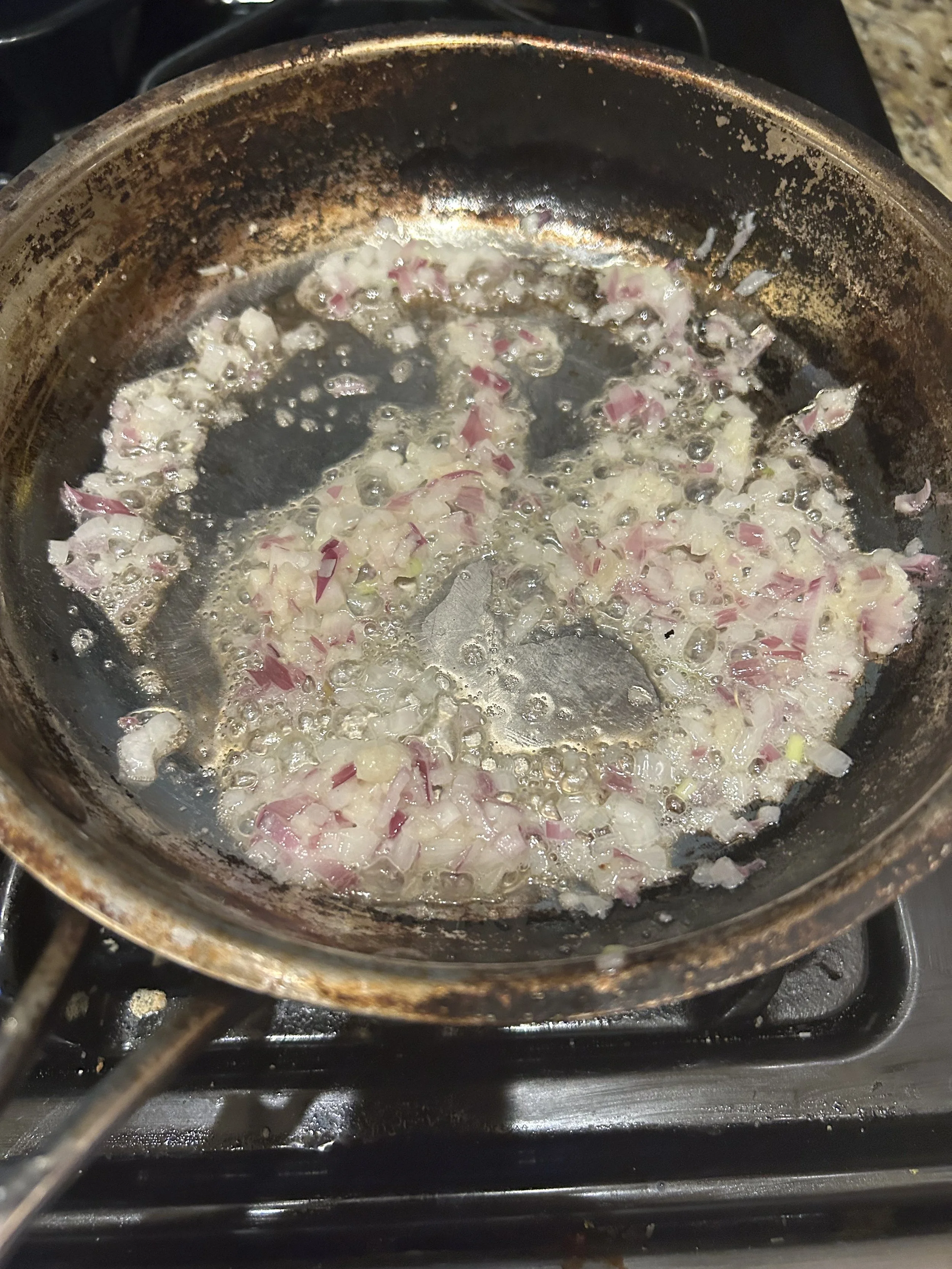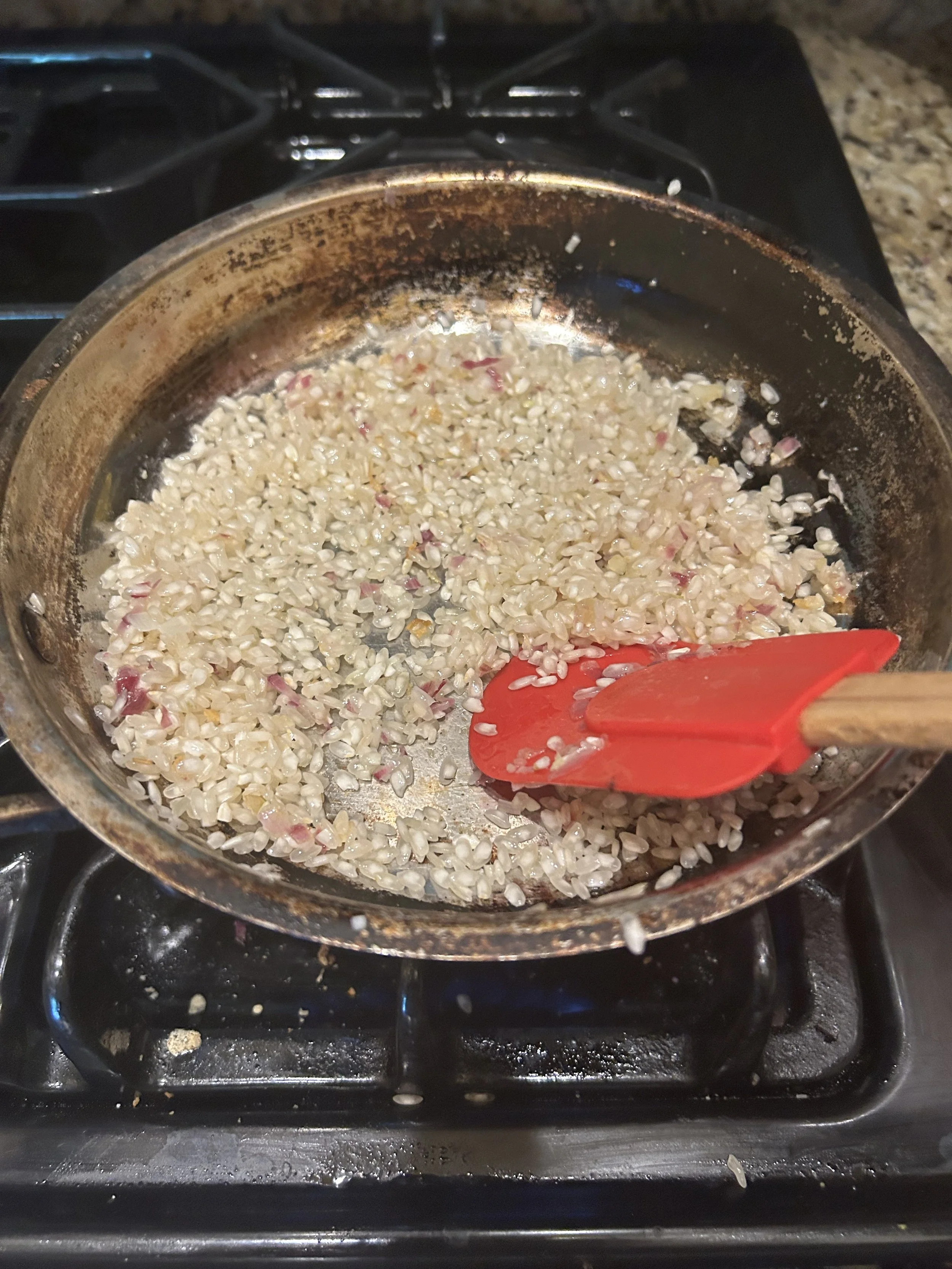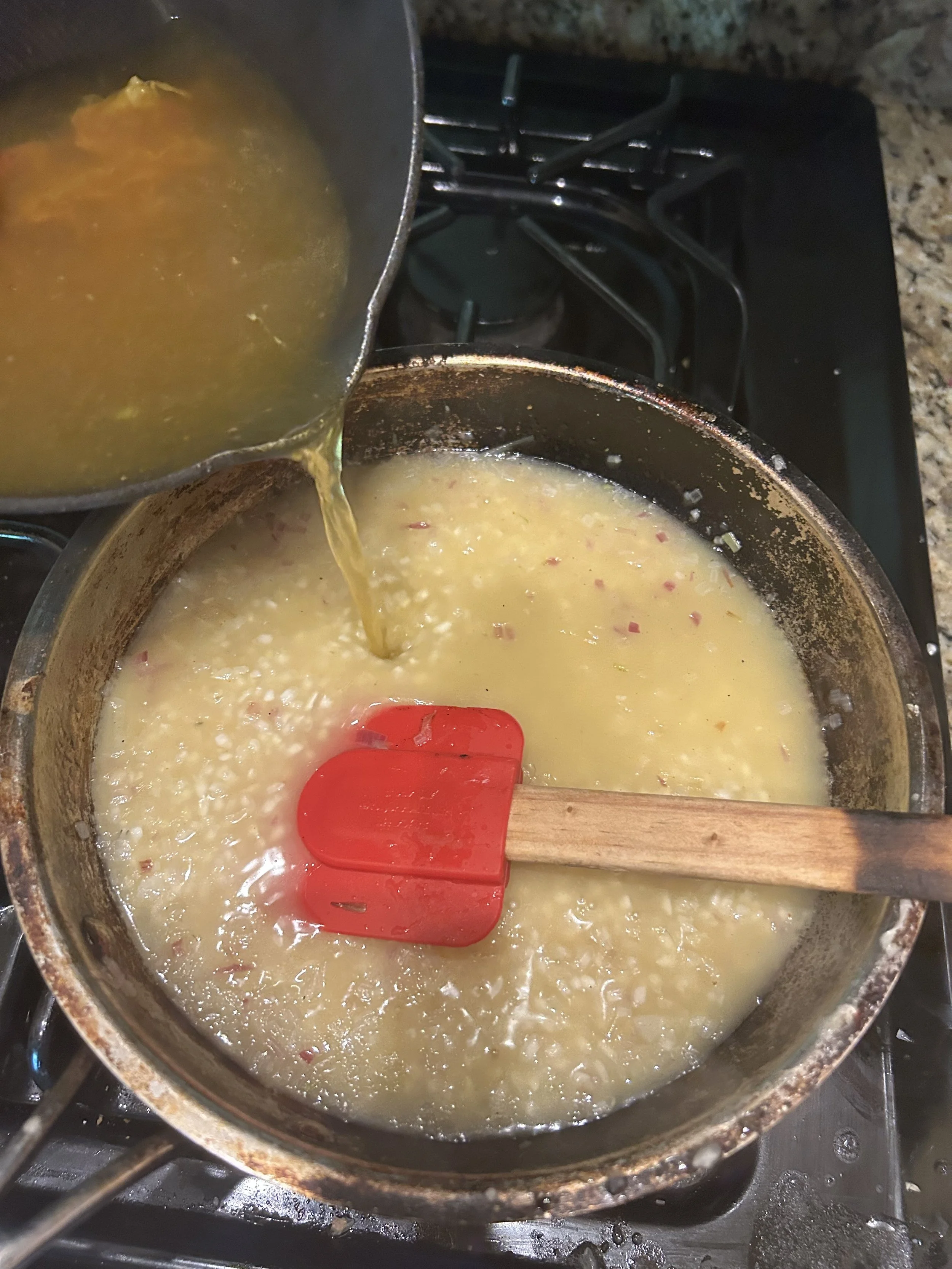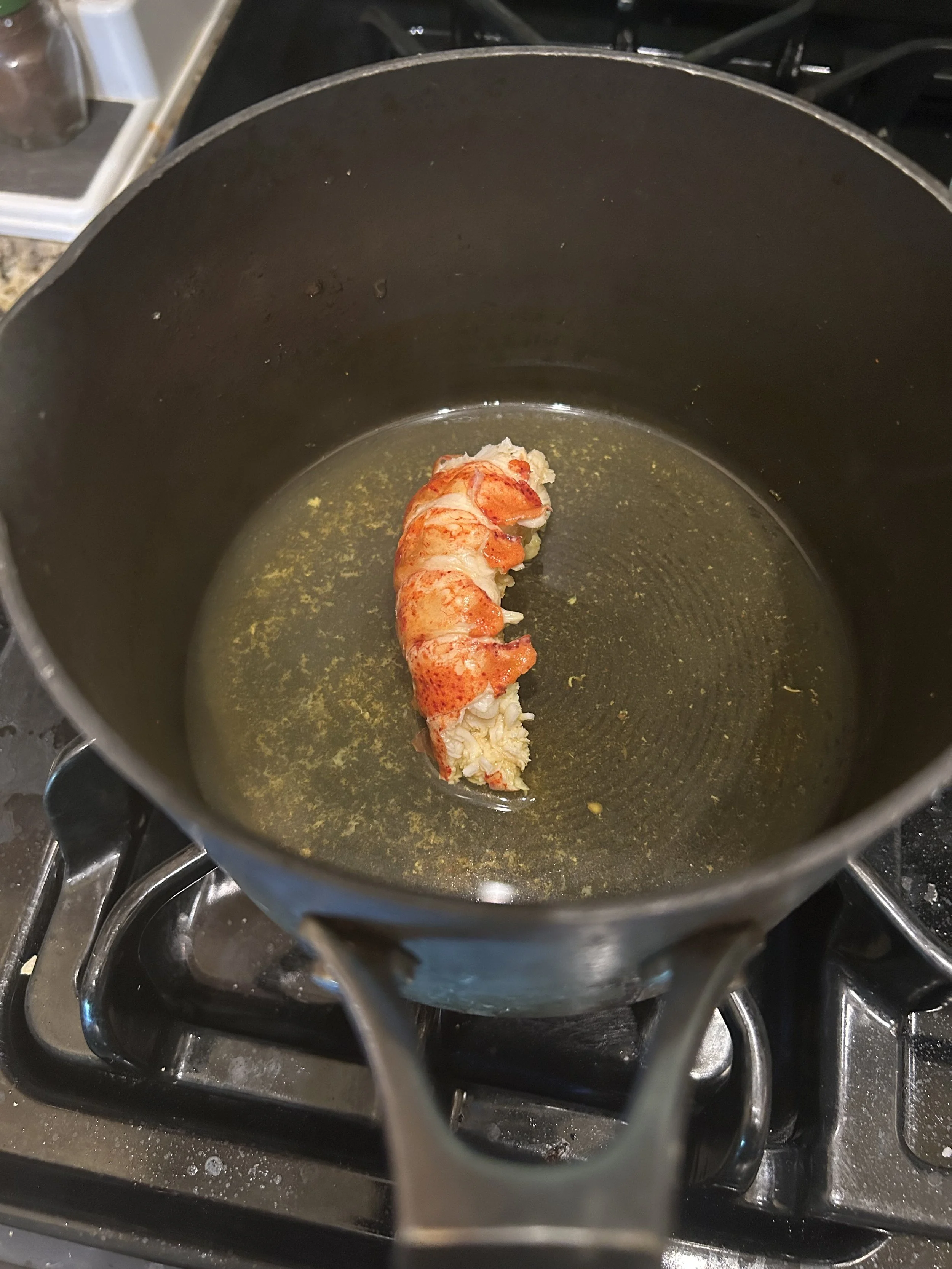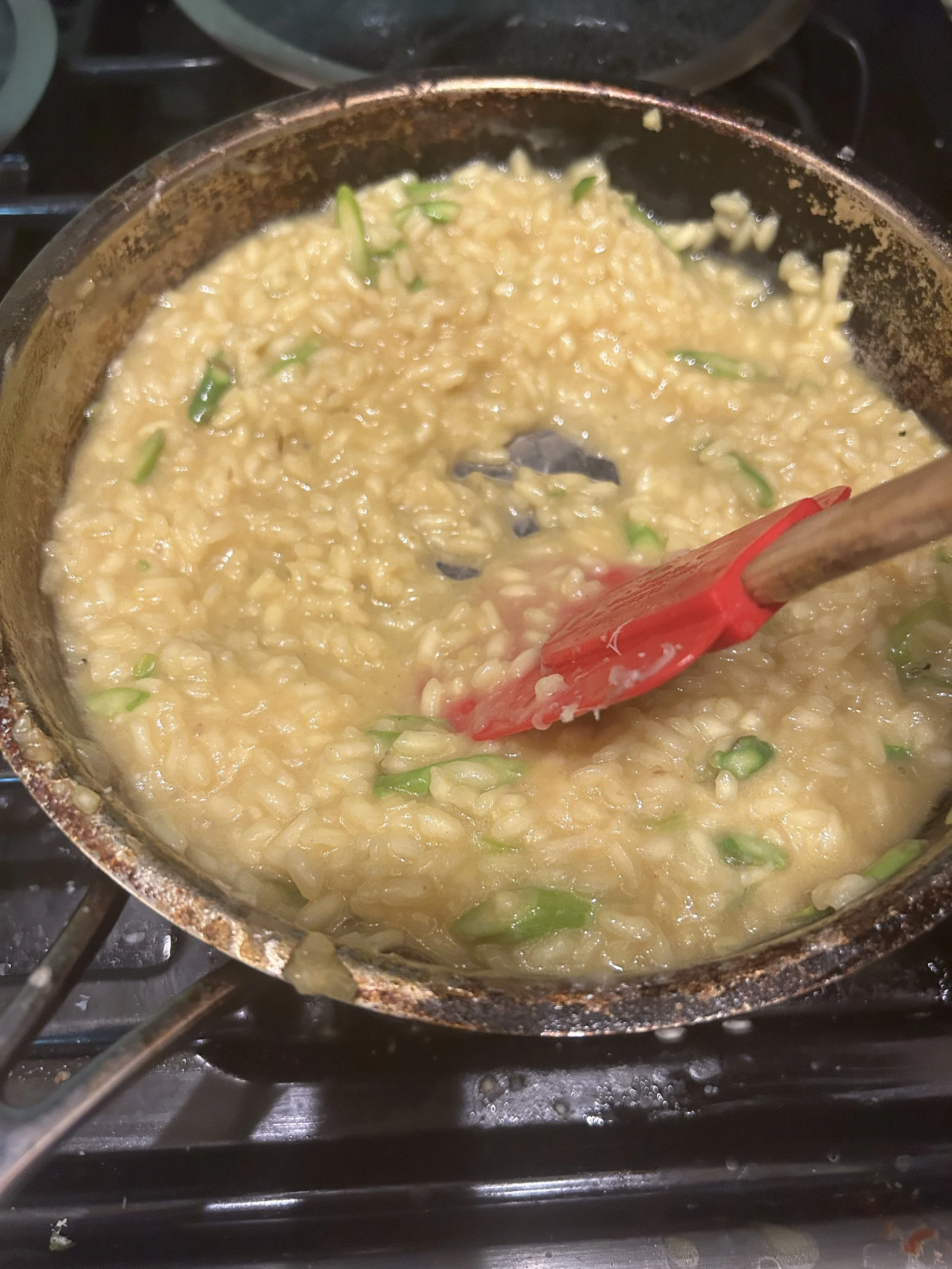Risotto with Lobster
Hello, food lovers; I hope you’re doing well.
I am going to attempt to recreate a dish that I had at a restaurant recently and enjoyed a lot, saffron risotto with lobster and asparagus.
This dish was part of a tequila-tasting dinner hosted by Limelight Hotel in Snowmass, Colorado, and Volco Tequila, a dinner I mentioned in the article below.
I loved the dish so much that I thought I’d try making it myself.
Based on the description on the menu and what I tasted, this dish features a creamy risotto laced with saffron, white wine, parmesan and thin slices of asparagus.
And sitting on top of that golden mound of rice is a plump, red lobster tail plus a little flower of butter and some parsley.
I haven’t worked with lobster that much before, but I have made risotto quite a few times, and I don’t think the lobster will be that much different than crab, something I have worked with, so I feel confident that I’ll pull this off.
Before getting into the dish, let’s talk about some of the key components.
The Lobster
Lobsters might be giant sea cockroaches, but that doesn’t stop it from being highly sought-after in fine-dining restaurants.
If I lived near the coast, I’d likely be able to buy live lobster that I would…and it’s life and cook from there, but that’s not really an option for me.
Fortunately, most grocery stores sell frozen raw lobster tails that are as good as the kind you get fresh, as long as you know how to work with it.
The only thing is, once you thaw the lobster tails, you can’t re-freeze them. Like with meat, thawing causes a bit of water to build on the surface, so if the meat is re-frozen, large ice crystals will form, compromising the meat’s taste and texture.
Like in the original dish, I’ll be draping the meat on top of my risotto and steeping the shells info some stock for a really nice flavor in my rice.
The Risotto
As I just said, I’ve made risotto more than a handful of times, so I feel confident that I’ll be able to do it this time.
The concept of making risotto is easy, you slowly add hot stock to rice while constantly stirring it, slowly cooking the rice while beating out the starch to give it a creamy texture.
On paper, it sounds easy, but there are many ways it can go wrong.
If you don’t stir the rice enough or overheat it, the rice will boil and turn to mush, if you add too little stock, the rice will never cook.
The list goes on. Fortunately, if you remain confident in what you’re doing and follow some simple guidelines, you’ll find yourself making great risotto in no time.
Saffron
Here’s what will really up the price point on this dish.
Saffron is the most expensive spice in the world and is used mainly in Spanish, Italian, and Indian cuisine. It’s the dried stigma of the crocus flower, which is very time-consuming to extract.
When steeped into a hot liquid, saffron offers a bright yellow color and earthy flavor, which is why chefs love it.
If you can’t find saffron or don’t want to spend the extra money, then a blend of turmeric and paprika is a decent substitute.
Risotto with Lobster
3 cups of chicken stock
2 lobster tails, thawed
Salt
A pinch of saffron*
5 tablespoons of butter, divided
1 medium shallot, minced
2 cloves of garlic, minced
1 cup of Arborio rice
1/2 cup of white wine
6-8 thin spears of asparagus, thinly sliced on a bias
1/2 cup of Parmesan cheese
Freshly ground black pepper
Chopped parsley for garnish
*As mentioned above, if you can’t find saffron or don’t wish to spend the extra money, a blend of 1/4 teaspoon each of turmeric for color and paprika for earthy flavor will suffice.
It’s what I did, FYI
Step 1: Prepare the lobster
Pour the stock into a saucepan and heat it to a light boil. Add the lobster tails and a pinch of salt, then boil for about 2 minutes. You don’t want to cook the lobster at this point; you just want to make it easy to remove the shell. The shell should just start turning red.
Take the lobster out of the pot, then reduce the heat to a bare simmer.
When cool enough to handle, use kitchen sheers to cut along the underside of the lobster tails, then carefully pull the shell apart and remove the meat.
Place the shells back into the pot with the stock and set the meat aside. Crush the saffron in your hands, add that to the stock, and leave to infuse.
Step 2: Start the risotto
Melt 2 tablespoons of butter in a wide skillet over medium-low heat. Add the shallots and garlic, then cook for about 5 minutes, or until they soften.
Add the rice, then cook for another 2 minutes to lightly toast.
Add the wine, then begin stirring the rice as it comes up to a simmer. Now the risotto process has begun, so do not stop stirring.
Once the wine has reduced and the rice is almost dry, add about 1/2 cup of stock, or enough to cover the rice, and repeat what you did with the wine, constantly stir the rice and maintain a gentle simmer.
This is when you’ll start seeing that saffron stain the risotto a golden yellow color.
Once the first addition of stock has reduced to the point where you can see the rice poke up from the surface, add more stock and repeat.
Also, taste the rice after each addition of stock has evaporated, and see how the rice is coming along. You might not need all of the stock in the pot, so keep tasting and stop when the rice is tender.
Step 3: Rest the risotto
Once the rice is tender but there’s still a good deal of liquid in the pan, stir in the asparagus, take the pan off the heat, then cover and leave the rice to rest for at least 10 minutes.
Believe it or not, there’s enough heat in the pan to cook the asparagus.
Remove the lobster shells from the pot with the stock, then add the tail meat, cover the pot, and let it steam for 3-5 minutes, or until the lobster is cooked through.
Step 4: Plating
Stir 2 tablespoons of butter and the Parmesan into the risotto, season with pepper to taste, then divide among 2 bowls and top with a lobster tail.
Cut the remaining tablespoon of butter in half and palace one half onto each lobster tail, and finish with a sprinkle of parsley.
No, I didn’t feel like messing around with doing a butter flower. If you wanted to, you could let that butter get really soft, place it into a piping bag with a star tip, and pipe little flowers onto a small square of parchment, but that seemed like too extra of a step to me.
Looking between my dish and the one I had at Limelight, the previous lobster was certainly bigger, a bit ironic that I get something bigger at a fine dining restaurant.
Also, the Limelight risotto was certainly thicker, I likely used too much stock at the end, but it could be worse. I can also see that their risotto was a brighter yellow, likely because they actually used the saffron.
Taste-wise, my lobster and rice were perfectly cooked, but since I didn’t use the saffron, the flavor wasn’t exactly the same. Still good, just not exact.
Also, my asparagus was a bit crunchier than before, perhaps I should’ve blanched the asparagus before slicing. It’s not bad, just not what I had before.
Overall, my dish was pretty similar to the one I had at Limelight and is certainly good as a date night dinner.








